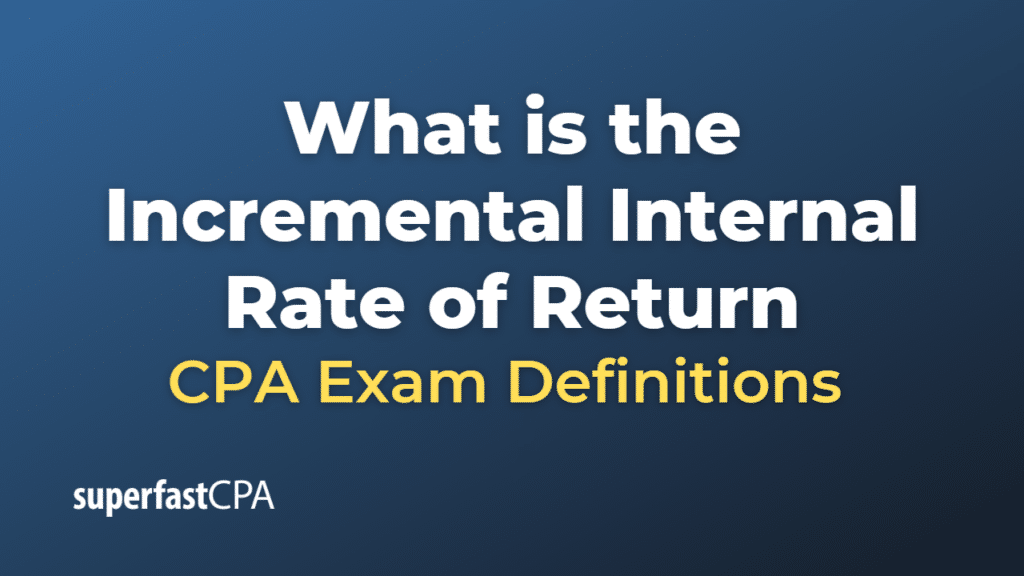Incremental Internal Rate of Return
The incremental internal rate of return (IIRR) is a capital budgeting technique used to rank different projects or investments when their sizes (initial investment or cash outflows) differ significantly. It’s a modification of the internal rate of return (IRR) method, which calculates the discount rate that makes the net present value (NPV) of a project’s cash flows equal to zero.
The IIRR is particularly useful when comparing two projects with different scales or initial investment requirements. A larger project might have a lower IRR but generate greater total net cash flows than a smaller project with a higher IRR. By calculating the IIRR, we can better compare these projects on an equal footing.
Here’s how you would calculate the IIRR:
- Rank the projects from smallest to largest based on their initial investment.
- Calculate the difference in initial investments and future cash flows between the smaller project and the larger project. This difference is the incremental investment.
- Calculate the IRR of this incremental investment. This is the IIRR.
If the IIRR is higher than the required rate of return, you would choose the larger project. If not, you would choose the smaller project.
Example of the Incremental Internal Rate of Return
Let’s consider an example to illustrate incremental internal rate of return (IIRR):
Suppose a company is considering two projects:
Project A:
- Initial Investment: $100,000
- Year 1 Cash Inflow: $40,000
- Year 2 Cash Inflow: $60,000
- IRR of Project A: 18% (calculated using a financial calculator or software)
Project B:
- Initial Investment: $200,000
- Year 1 Cash Inflow: $90,000
- Year 2 Cash Inflow: $120,000
- IRR of Project B: 15%
At first glance, it might seem like Project A is the better investment since it has a higher IRR. But remember, Project B is larger and might generate more net cash inflows, despite its lower IRR.
To resolve this, we compute the IIRR. We look at the incremental investment and cash inflows when moving from Project A to Project B:
- Incremental Initial Investment: $200,000 – $100,000 = $100,000
- Incremental Year 1 Cash Inflow: $90,000 – $40,000 = $50,000
- Incremental Year 2 Cash Inflow: $120,000 – $60,000 = $60,000
Then, we compute the IRR of these incremental cash flows:
- Initial Outflow: -$100,000
- Year 1 Inflow: $50,000
- Year 2 Inflow: $60,000
Assuming these values, the IIRR might be around 16% (calculated using a financial calculator or software).
So, if the company’s required rate of return (or cost of capital) is less than the IIRR of 16%, it should undertake the larger project (Project B), despite its lower standalone IRR, because the incremental cash flows from choosing Project B over Project A provide a return greater than the company’s cost of capital.













